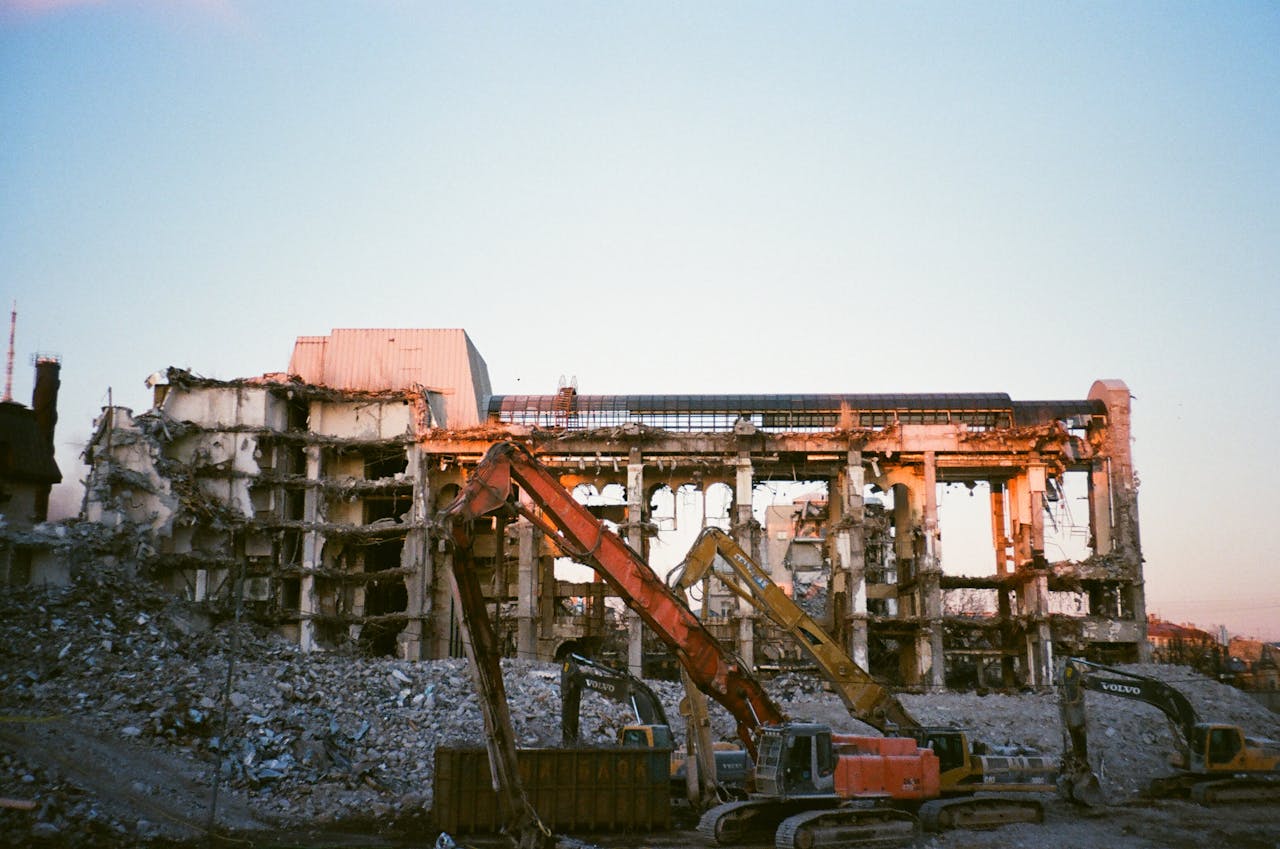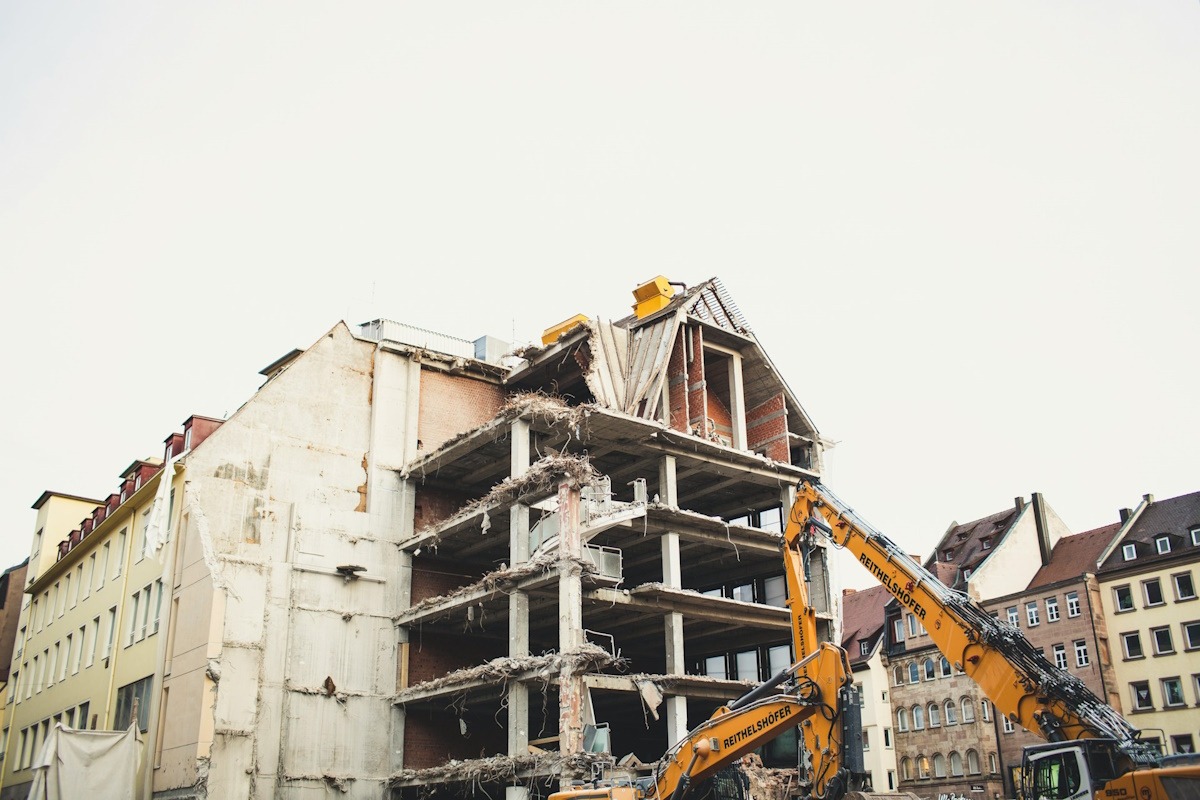Preparing your property for commercial demolition is a critical endeavor that demands thorough preparation and careful execution. Whether you’re clearing space for new construction or revitalizing a site, navigating the complexities of demolition requires strategic planning and adherence to regulatory standards. By following a structured approach and implementing key steps, you can ensure a smooth and efficient demolition process while prioritizing safety and compliance.

Get a Professional Help
Engage qualified contractors, structural engineers, and environmental specialists who have experience in handling demolition projects. These professionals can provide valuable expertise in assessing structural stability, navigating regulatory requirements, developing a demolition plan, managing hazardous materials, and ensuring site safety. When it comes to professional help, industrial demolition contractors can provide expertise in safely and efficiently executing complex demolition projects. Their knowledge and skills will streamline the process, minimize risks, and ensure compliance with local laws and environmental standards, ultimately leading to a successful demolition project.
Obtaining Necessary Permits
Obtaining the necessary permits is a crucial step in preparing your property for commercial demolition. Before initiating any demolition activities, it’s essential to contact your local authorities to secure the required permits and approvals. Compliance with zoning regulations, environmental guidelines, and safety standards ensures legal compliance and minimizes the risk of delays or complications during the demolition process. Engaging early with regulatory bodies also allows for any necessary adjustments to the demolition plan, ensuring smooth progress and adherence to all necessary legal and safety requirements.
Developing a Demolition Plan
Developing a demolition plan is a crucial step in preparing your property for commercial demolition. This comprehensive strategy serves as a blueprint for the entire project, detailing the sequence of demolition activities, safety procedures, waste management protocols, and environmental considerations. Collaborating with experienced contractors ensures that the plan addresses site-specific challenges, such as neighboring properties, utility connections, and structural stability assessments. By outlining clear objectives and timelines, a well-developed demolition plan minimizes risks, maximizes efficiency, and facilitates a streamlined demolition process from start to finish.
- Sequence of Demolition: Start by determining the optimal sequence for demolition activities. This typically involves beginning with non-load-bearing structures and progressively moving towards load-bearing ones. Planning the sequence carefully helps to minimize risks, such as structural collapse, and ensures efficient debris management throughout the project.
- Waste Disposal Procedures: Establish a clear plan for managing demolition debris and waste materials. Identify local disposal facilities that can handle various types of debris, including recyclable materials. Implementing recycling practices where possible can reduce environmental impact and project costs.
- Safety Protocols: Prioritize safety by developing comprehensive protocols for all demolition activities. Ensure that all personnel involved are trained in proper demolition techniques and equipped with necessary personal protective equipment (PPE). Implement regular safety inspections and emergency response procedures to mitigate potential hazards.
- Environmental Impact Mitigation: Consider the environmental impact of demolition activities and develop mitigation strategies accordingly. Implement dust control measures to minimize airborne particles and pollutants. Protect nearby water sources from contamination by properly managing hazardous materials and wastewater.
Disconnecting Utilities
Disconnecting utilities is a crucial step in preparing for commercial demolition. Before any demolition work begins, it’s essential to arrange for the safe disconnection of all utilities serving the property. This includes electricity, gas, water, and sewer connections. Properly shutting off these services not only ensures the safety of workers but also prevents potential damage to infrastructure during demolition activities. Engage qualified professionals to handle the disconnection process according to local regulations and safety standards, minimizing risks and ensuring a smooth transition to the demolition phase.
Clearing Hazardous Materials
Clearing hazardous materials from the property is a critical step in preparing for commercial demolition. Before any demolition work begins, it’s essential to identify and remove substances such as asbestos, lead-based paint, and other dangerous materials. Hiring qualified professionals to conduct thorough testing and safe removal ensures compliance with environmental regulations and protects the health of workers and the surrounding community. Proper handling and disposal of hazardous materials contribute to a safe demolition process and pave the way for smooth redevelopment or construction projects in the future.
Securing the Site
Securing the site during commercial demolition is crucial to ensure safety and prevent unauthorized access. Erecting sturdy fencing around the perimeter and posting warning signs help to restrict entry and minimize the risk of accidents. It’s also essential to implement additional safety measures such as covering openings, securing loose debris, and maintaining clear pathways for emergency access. By prioritizing site security, you protect both workers and the surrounding community from potential hazards associated with demolition activities.

Preparing your property for commercial demolition requires meticulous planning, compliance with regulations, and adherence to safety protocols. By assessing structural integrity, obtaining necessary permits, developing a demolition plan, disconnecting utilities, clearing hazardous materials, and securing the site, you can ensure a smooth and safe demolition process. These steps not only facilitate the efficient removal of structures but also pave the way for future development or redevelopment projects.